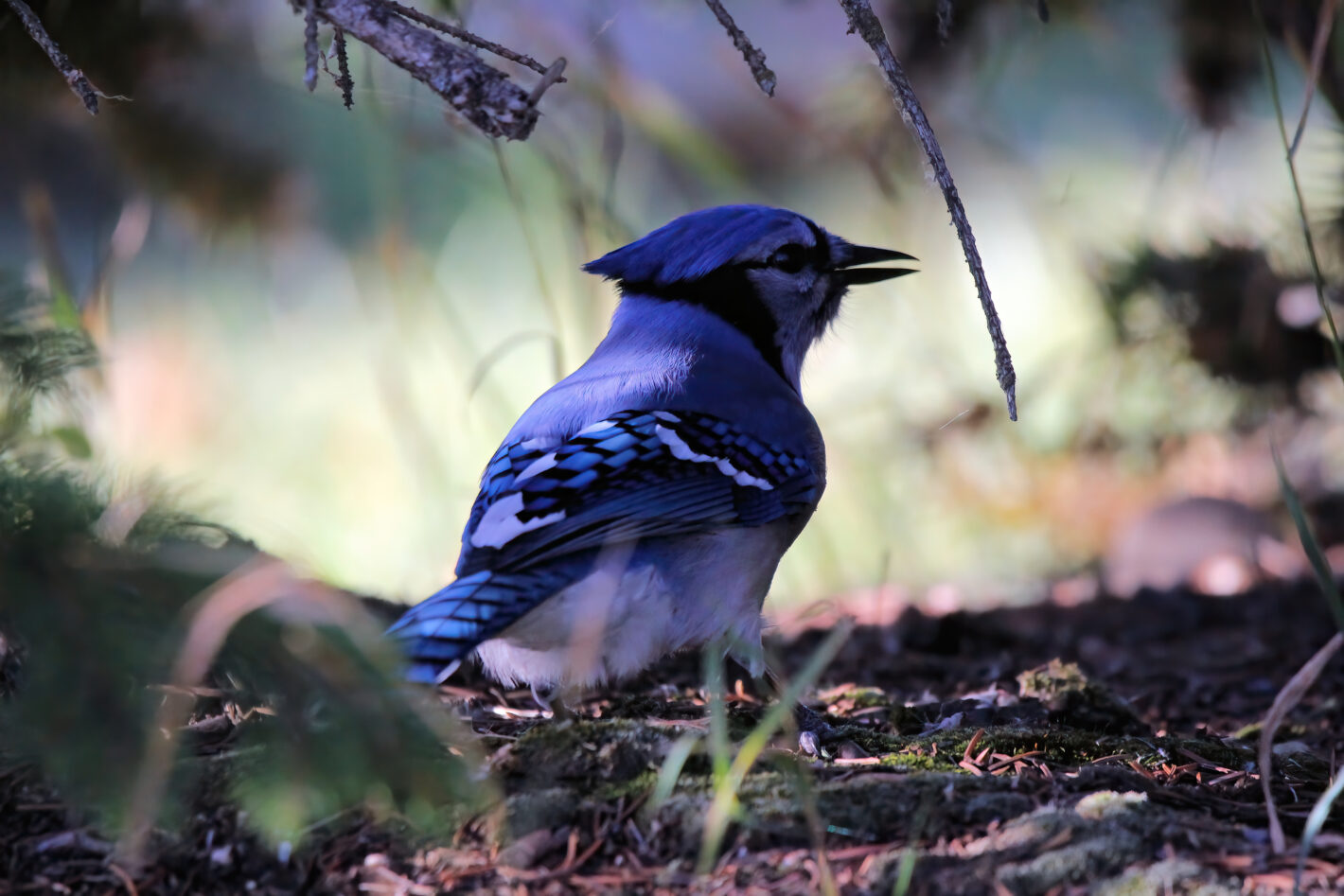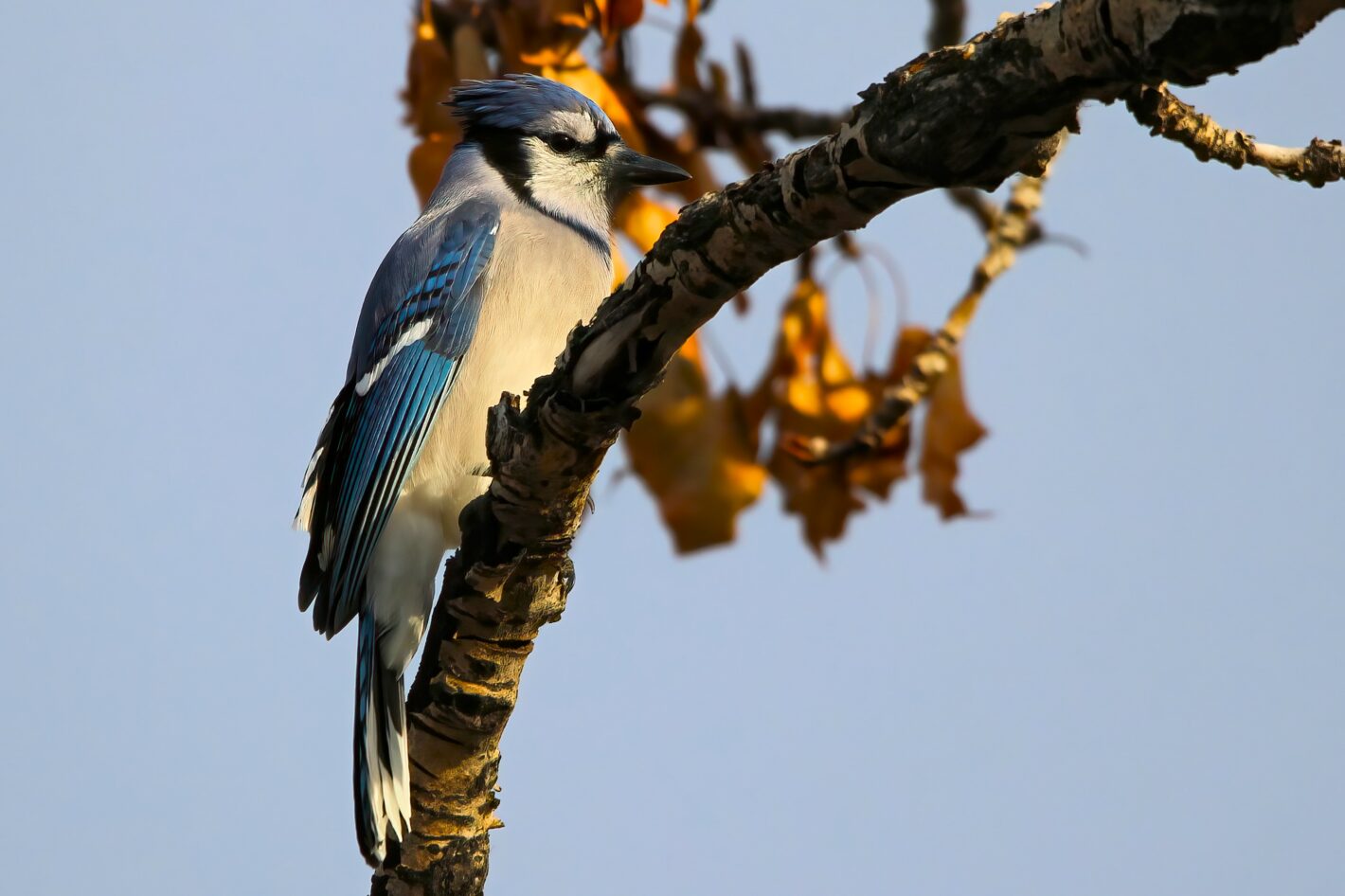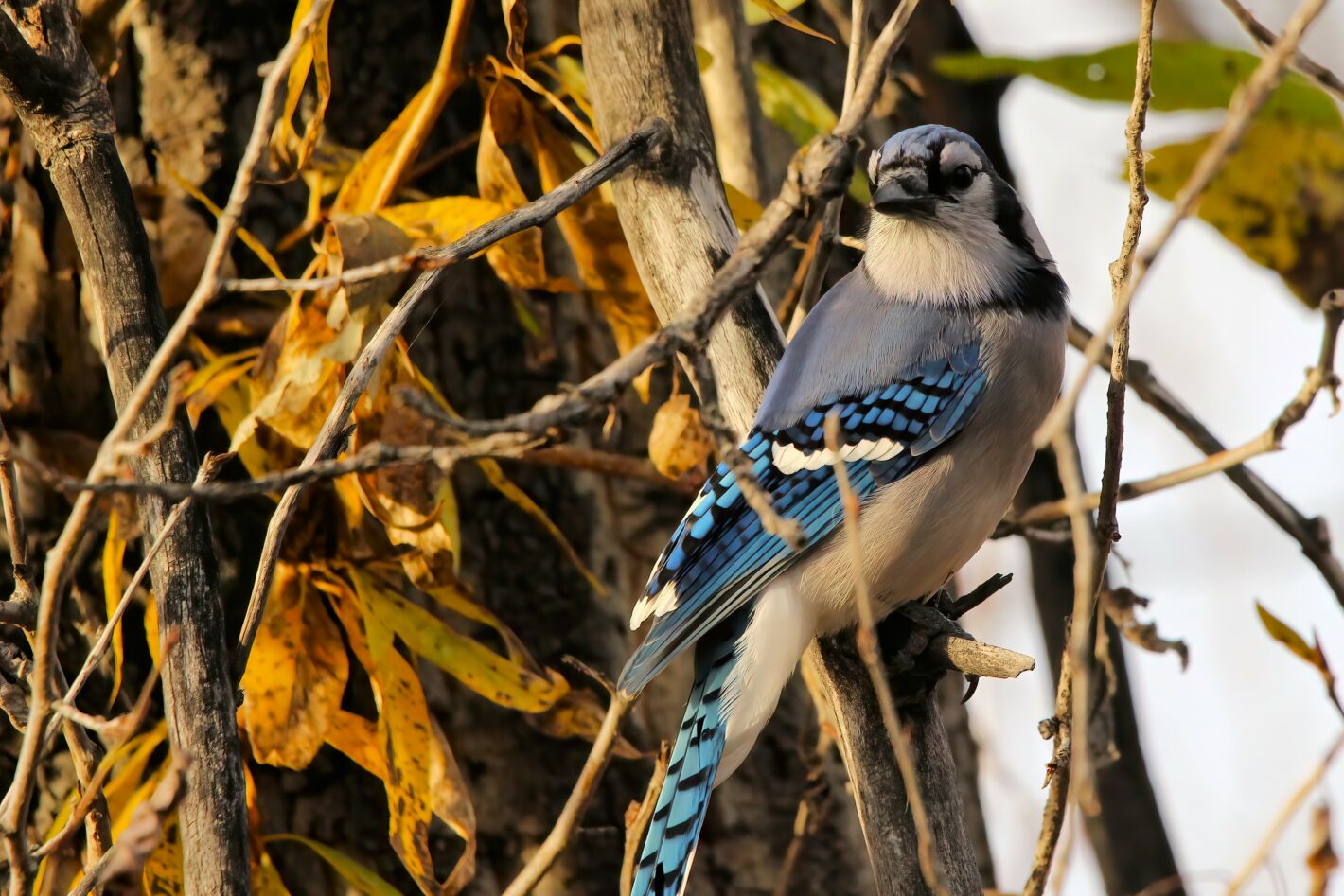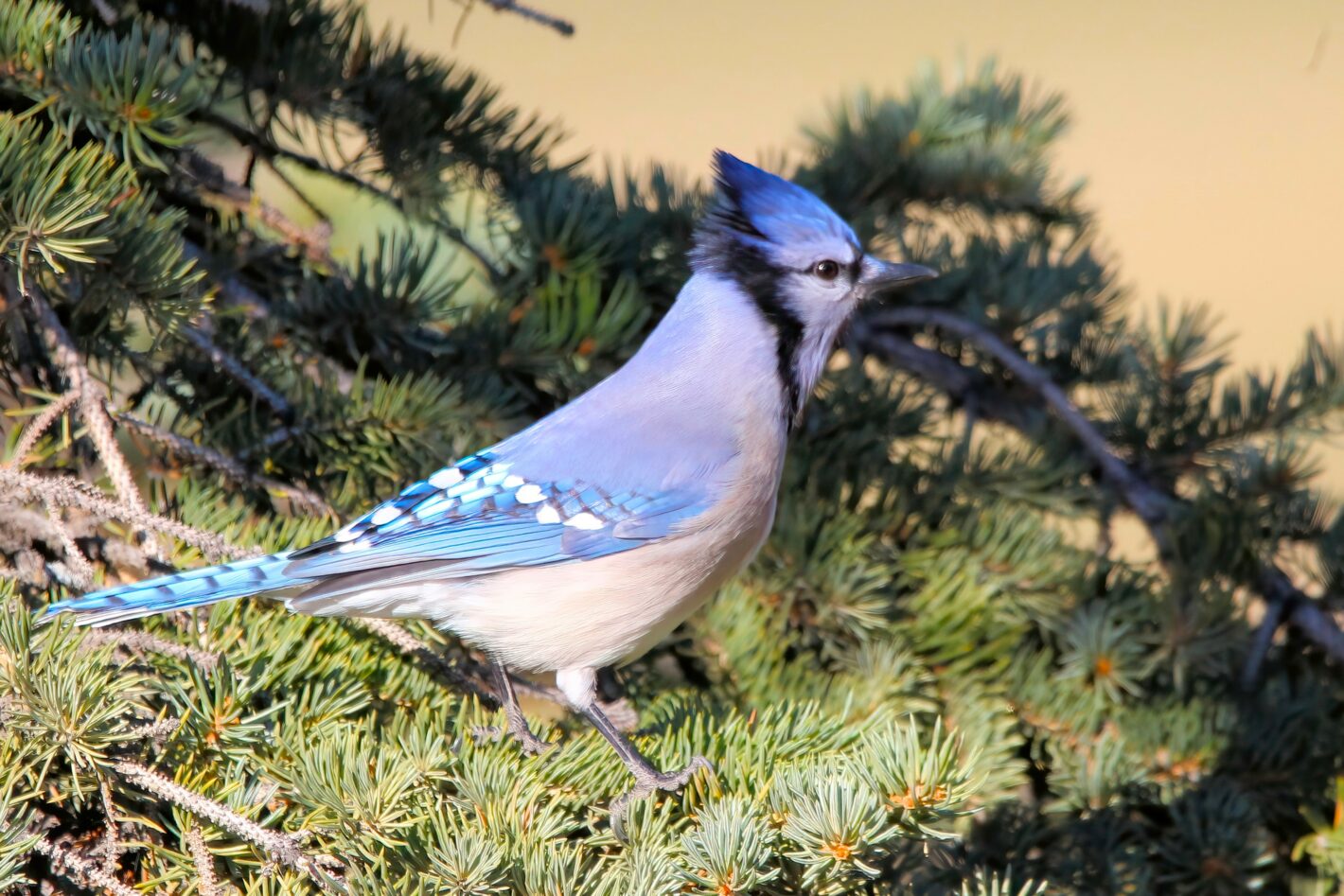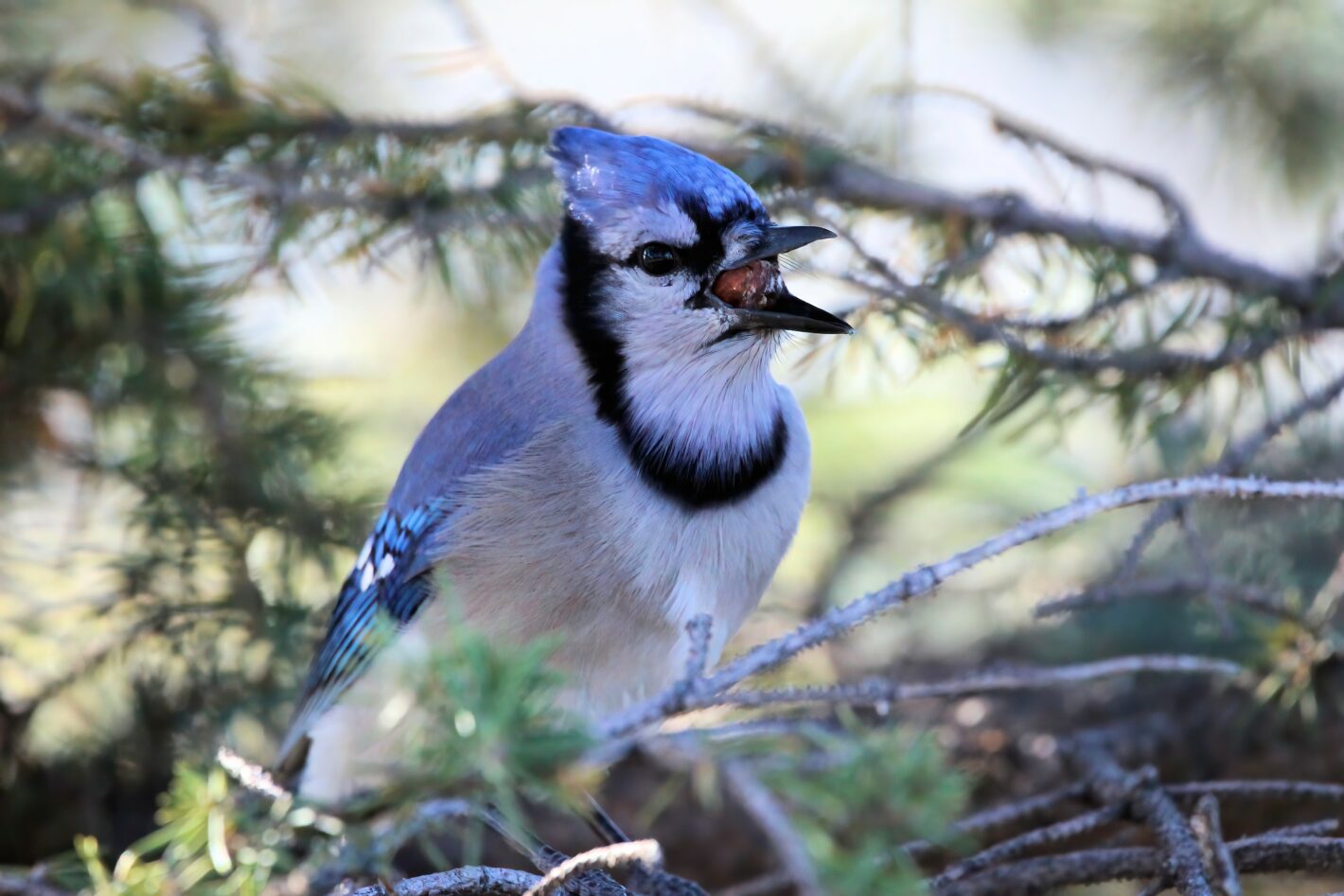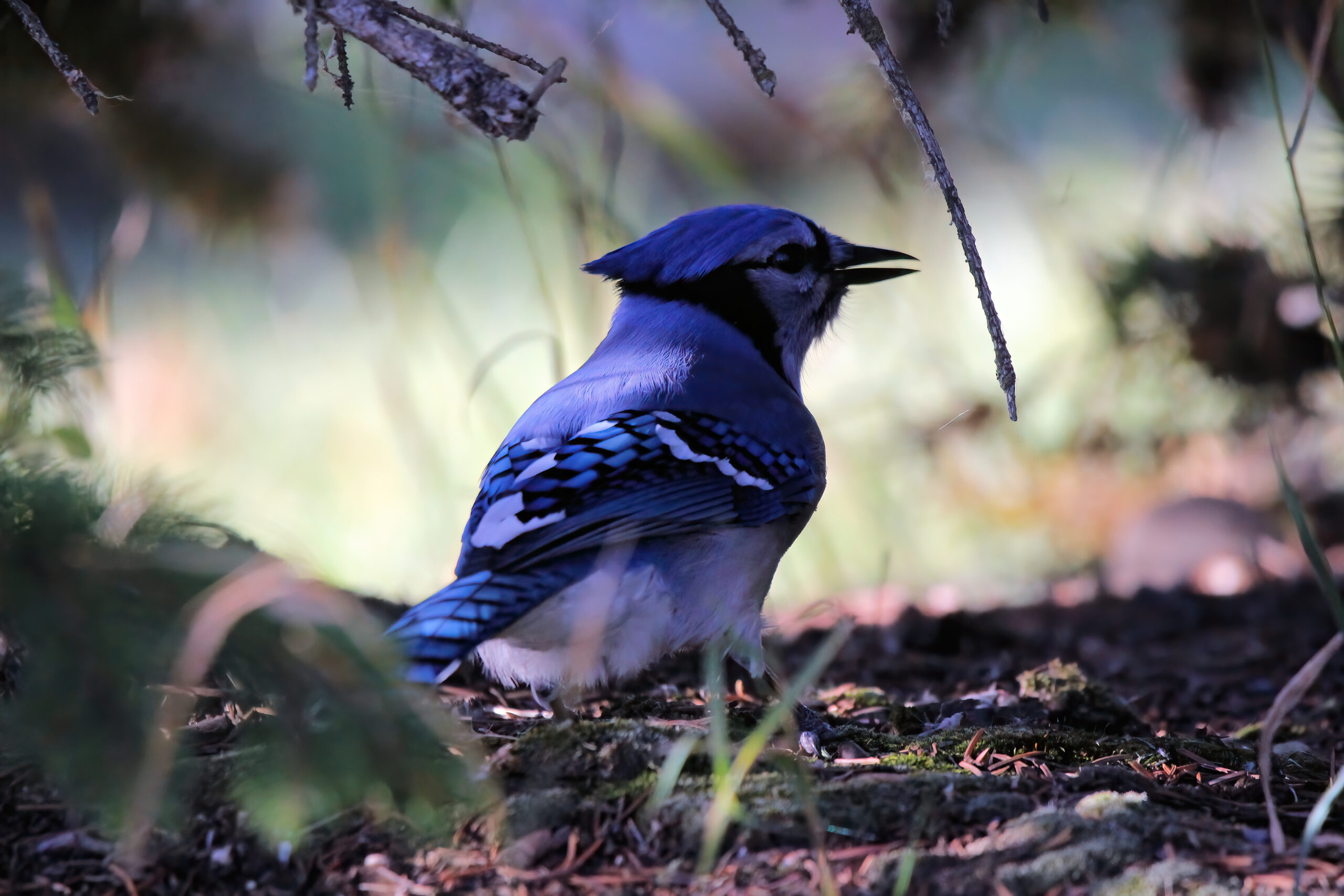A jay! A Blue Jay! The blue jays are back in town! I must say I am mystified by the comings and goings of this member of the Corvid family of birds. It seems that months will pass before the jays return from some unknown location. Announcing their presence with a pleasantly irritating scree, I turn to the windows facing into the yard and small park, looking for the brilliant hues of blue sported by this glorious bird.
Crested and enhanced with white, blue and black colored feathers, it’s truly a pleasure to hear a Blue Jay announce its arrival. Amazingly, melanin is the pigment in Blue Jay feathers, which is actually brown. It is the wonder of scattered light, striking the modified cells on the surface of feather barbs which gives the shades of blue that we see. House Sparrows scatter, heading for the lilac branches to perch and watch the jay feed on sunflower seeds, suet or perhaps peanuts conveniently left out to attract it to the yard. Enjoying peanuts immensely, we’ve seen jays cache peanuts, up to nine at a time, in their throat pouch, then fly off to store or eat them elsewhere. These jays also appreciate water in bird baths and will stop by for a sip.
The Corvid family of birds is known for the intelligence they use and demonstrate. Crows, ravens, jays, nutcrackers and magpies share extraordinary abilities. Blue Jays will imitate the sounds of hawks to warn other jays of the presence of a hawk or to fool other species into thinking a hawk is in the area. Imagine a Blue Jay wanting to keep sparrows and songbirds away from a backyard feeder! Captive jays cam mimic human voices or the meows of cats. Blue Jays also can “manufacture” tools. In a laboratory setting, these jays have torn and used strips of newspaper to access food pellets out of reach in their cages. Ants are often avoided as food by many birds, due largely to the formic acid released as a defense mechanism by ants. Blue Jays though, have a “life-hack” to address this challenge. Once an ant is picked up, the jay will rub the ant on its feathers to remove the formic acid, before enjoying a meal.
A loyal bird, a pair of Blue Jays will mate for life. Nesting in heights from 3 to 8 metres above ground, the female’s main duty is to incubate the eggs, while the male provides food for her during this entire process.
The crest on the head of the jay is one main method of communication. Aside from the raucous calls, the positioning of the crest can tell a birder what level of stress or aggression the jay may be experiencing. If the crest is flat, the jay is relaxed. When calling or feeling aggressive, the crest is held upright. In watching jays fly, you may notice they fly in silence, calling only after a perching at a new location.
Unlike many birds that migrate to escape our winters, migratory patterns for Blue Jays are not completely predictable or understood. At times some jays will migrate short distances and others will stay as residents in an area. At times younger jays seem to be migrating, but not necessarily so for every younger jay. For us, the arrival and presence of a Blue Jay is a joy. Rare as these moments are it seems, these blue beauties, enhance our appreciation of jays and we cherish their company.
